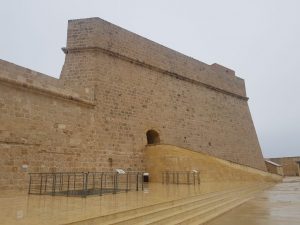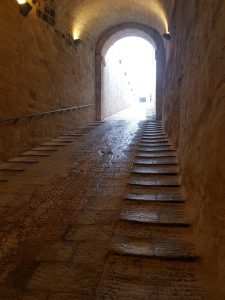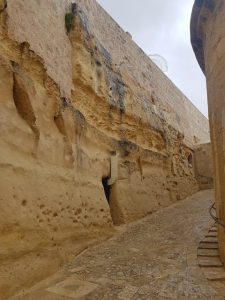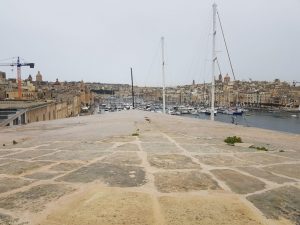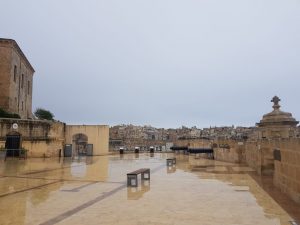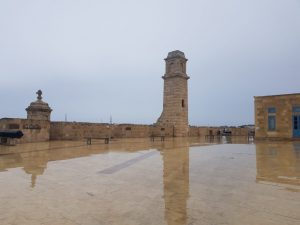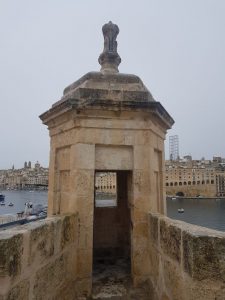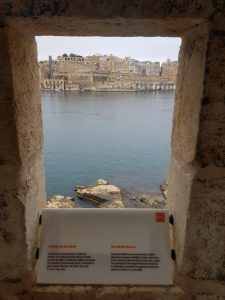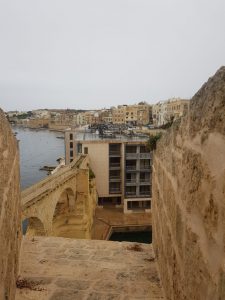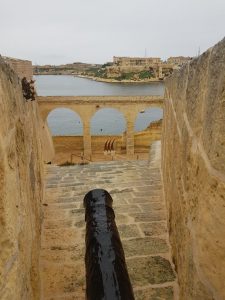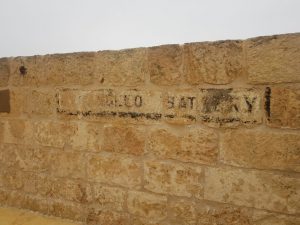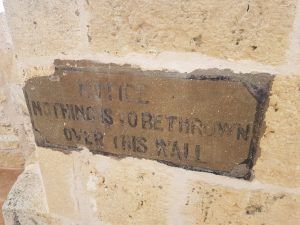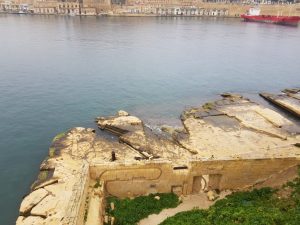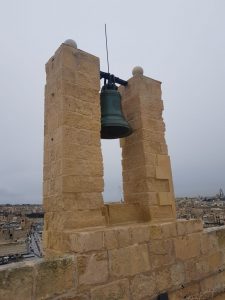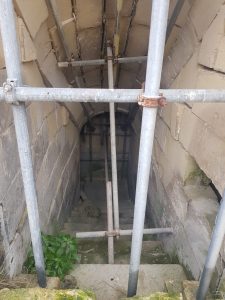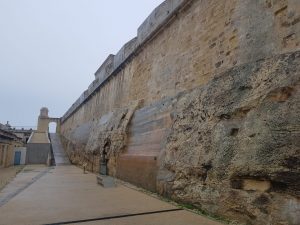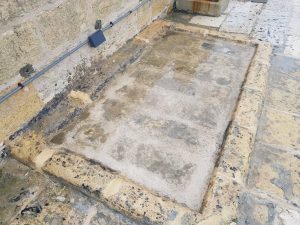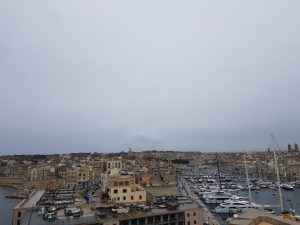Malta (South Eastern Region) – Birgu – Fort St. Angelo
There has been a stronghold on the peninsula now occupied by Fort St. Angelo for so long that historians can’t pick out a particular date, but it is back in antiquity. There was a castle here by the thirteenth century, but it was the Knights of St. John who expanded it in the 1530s and made it their base on Malta. The site was used to defend the islands from Ottoman attack during the Great Siege, with one of the cannonballs fired at the site having been found recently.
Fort St. Angelo was further expanded in the 1690s and it wasn’t until the British took over in the early nineteenth century that it started to be redeveloped again. Damaged in the Second World War, the building was repaired and continued to be used by the British armed forces until they left Malta in the 1979. From 1906 it was also the home of the Royal Navy’s Mediterranean Fleet, although they irritated the locals by renaming it HMS Egmont in 1912. Fortunately the British saw the error of their ways and the original name was restored in 1933 when it was called HMS St. Angelo.
It’s only in the last two years that Fort St. Angelo has been turned into a museum, so, despite the rain, I felt that a visit to see the efforts of Heritage Malta would be in order. The site is also now the home of the Knights of St. John once again, something that feels like history falling back into place. In the above photo is the entrance into the museum, anyone getting into here would have already had to gain access through one gatehouse.
The site is large, but there are a lot of buildings which are empty and it’d be exciting if in the future there was more information about the history of the site. There are though three interpretation rooms in what were formerly dormitories used by the British, and the sally port which runs to them is accessible. However, the former recreation rooms and war shelter tunnel aren’t yet accessible, but perhaps might be in the future.
After getting a ticket, this is the entrance up into the main part of the fort. It’s hard to see how anyone could successfully attack this fort unless they heavily out-numbered the defenders.
This is D’Homedes Bastion which was built between 1536 and 1542, and the above photo shows just how wide the defensive wall was.
The rain meant that there were nearly no other visitors at the site, although the rain did make the floor just a little slippery as well. But it was immaculately clean and well kept, clearly some money has been spent on this restoration project.
There were a few of these watchtowers on the edges of the fort.
Inside these watchtowers there were extensive views over the local water.
There are several of these intriguing sets of steps, going where exactly I don’t know….
Part of the early defences.
Painted signs from when the building was used by the British military. There’s another old British sign in the shifting lobby.
This would have been an area where supplies were brought into the fort.
What is known as the Siege Bell, which was rung when the Great Siege was over. The present bell is a little more modern, dating to the nineteenth century.
This tunnel leads down to what was once the largest water cistern on the fort, with a capacity of 1,500 tonnes. It was damaged during the Second World War, and never fully repaired.
There was a relatively large amount of damage caused during the war which was never properly restored, it was just patched up by the British. Some of that patching up, and more modern repairs, can be seen along the wall.
This is the area where the cannonballs would have once been stored.
View over Birgu.
This was a rather pleasant visit, with much more to see than I thought, but still a great deal more potential for the future. The staff were friendly, particularly the man in the cafe who was full of enthusiasm, and a delight to speak to. Part of the funding from the EU came because of the cultural events which would be held here, I can imagine it’d be an impressive backdrop to many different performances.
There were plans to turn this site into a hotel in the 1990s, which was part of the reason the site fell behind with its maintenance. Although I’m sure that it would have made a grand five star hotel, that would seem a rather unbecoming way for the site to have been used, a museum and cultural centre is a much better idea. There was a decision, which seems logical, to demolish anything which had been built after the British army left, as it was felt that it wouldn’t be an authentic part of the site’s heritage.
This is one of those places I look forwards to coming back to in around fifty years, unless I get fed up with travelling by then. Although I could just watch it on the future equivalent of Youtube I suppose….

